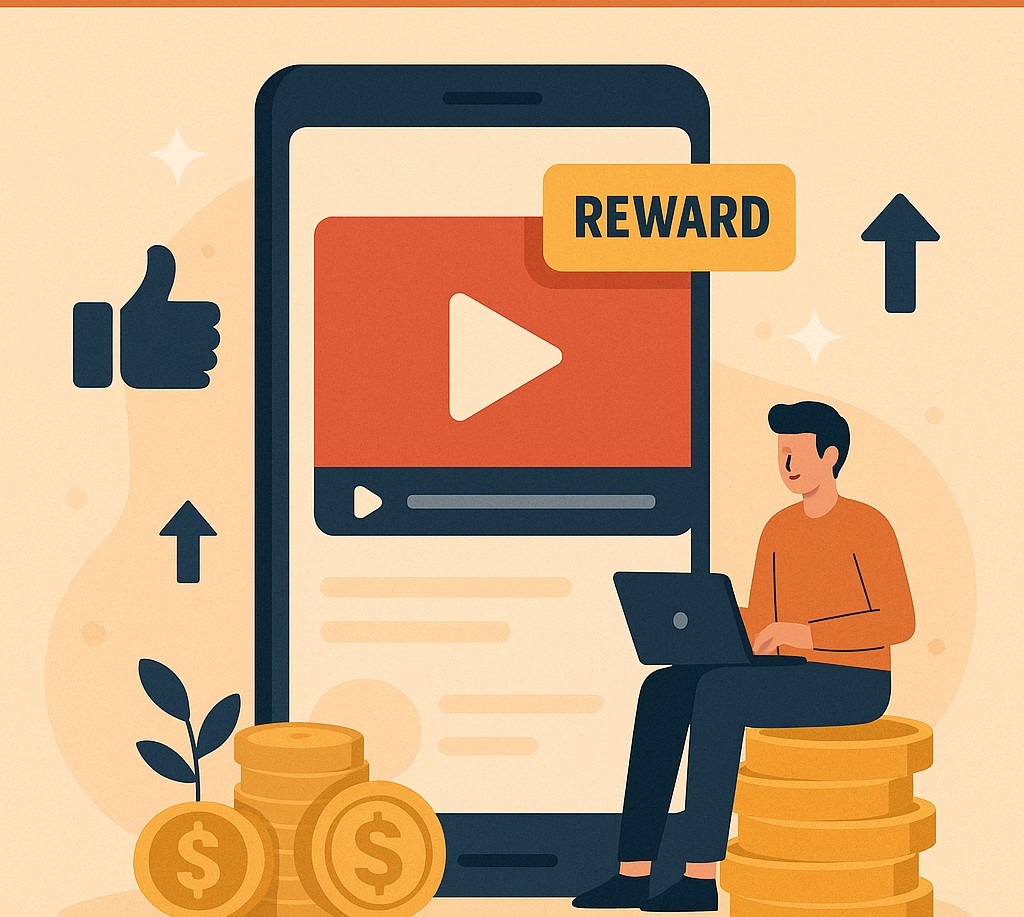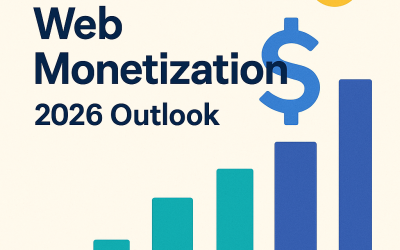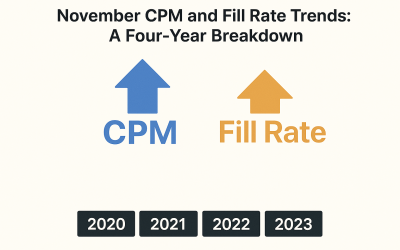Rewarded Video Ads: A Monetization Strategy That Works
Mobile gaming dominates today’s entertainment landscape, with millions of players spending countless hours exploring virtual worlds, collecting rewards, and building communities. For developers, this creates massive revenue opportunities—but only when monetization strategies are executed correctly and thoughtfully.
Unfortunately, many games chase quick profits by implementing disruptive ad features that ultimately frustrate users. Hidden close buttons plague mobile interfaces while auto-redirects interrupt natural gameplay flow. Non-skippable content blocks user progress, creating friction that damages the player experience. These tactics may boost short-term ad revenue, but they destroy long-term value by breaking user trust and increasing churn rates significantly.
Smart developers recognize this critical flaw and pivot toward high-quality rewarded video ads combined with strategic ad placement that enhances rather than interrupts gameplay.
Contents
- 1 The Foundation of Game Monetization
- 2 How Disruptive Ad Features Damage Revenue
- 3 Rewarded Video Ads: A Winning Strategy
- 4 Short-Term Revenue vs. Long-Term Success
- 5 Building Sustainable Monetization Strategies
- 6 The Ripple Effect of Poor Ad Quality
- 7 User-Centric Monetization Approaches
- 8 The Future of Mobile Game Monetization
- 9 AppLixir Rewarded Video Ads
The Foundation of Game Monetization
Free-to-play mobile games operate on fundamental value exchange principles that benefit all parties involved. Players access free content and entertainment while advertisers reach engaged, captive audiences. Developers earn through multiple revenue streams including rewarded video ads, in-app purchases, and brand impressions.
This model succeeds when users stay engaged and feel respected throughout their experience. Disruptive ads shatter that engagement immediately, creating friction between players and content while damaging the delicate balance between entertainment and monetization.
Recent research validates this concern through concrete data. A 2025 global study by Deloitte and Google AdMob surveyed 7,000 mobile gamers worldwide, revealing one undeniable truth: ad quality matters significantly more than ad frequency in determining player satisfaction and retention.
How Disruptive Ad Features Damage Revenue
Disruptive ad features take many forms that all share common characteristics of deception and manipulation. Close buttons hide in corner pixels while fake UI elements trick users into clicking unintended areas. Forced redirects launch unwanted app stores, and videos play without mute options or proper volume controls.
These deceptive tactics might raise short-term eCPM rates and boost immediate CPM metrics, but they dramatically increase churn rates as users abandon games after encountering these frustrating experiences. The study revealed shocking statistics that should concern every developer focused on sustainable growth.
One in five users quit games permanently after experiencing a single bad ad interaction. Churn increased by 6-7% when users encountered disruptive ads, while heavy gamers showed even worse results with up to 9% churn rates.
Heavy gamers, who play 10+ hours weekly, represent your most valuable user segment and drive disproportionate value through higher in-app purchases, frequent ad engagement, and organic recommendations to friends and family. Losing them damages not only direct revenue but also organic growth and user acquisition funnels.
Rewarded Video Ads: A Winning Strategy
Rewarded video advertising changes the monetization game entirely by creating genuine value exchanges. Users receive valuable rewards for watching ads, including in-game currency, power-ups, or extra lives, making the exchange feel fair and beneficial rather than exploitative.
This model aligns perfectly with user expectations while enhancing gameplay rather than interrupting it. Players choose to engage voluntarily without force or trickery influencing their decisions, leading to higher quality attention and better outcomes for all parties.
Advertisers benefit from qualified attention and improved brand recall, while publishers boost ARPDAU and LTV metrics. The Deloitte/AdMob study confirmed these benefits, showing that 72% of players continued playing after high-quality ads, and two-thirds of heavy gamers actually increased gameplay time following positive ad experiences.
This translates to higher retention rates, improved ad engagement across all metrics, and increased in-app purchases as players develop stronger emotional connections to games that respect their time and preferences.
Short-Term Revenue vs. Long-Term Success
Disruptive ad features create misleading analytics that can fool developers into thinking they’re succeeding. You might see higher click-through rates initially and impressive immediate ROAS on dashboards, but growing churn rates consume future revenue potential and create cascading problems.
High churn increases user acquisition costs dramatically while lifetime value metrics decline steadily. Brand loyalty evaporates quickly, and organic installs drop significantly as frustrated users share negative experiences with their networks.
Compare this to high-quality rewarded video ads that build genuine user trust and sustain long-term engagement. They increase session length and frequency while enabling consistent, scalable monetization that grows stronger over time rather than weaker.
Smart developers think beyond quarterly results and focus on sustainable growth strategies that prioritize user experience over short-term gains, building lasting relationships with their audience that generate more revenue over time.
Building Sustainable Monetization Strategies
Creating engaging ad experiences requires strategic planning that balances user satisfaction with revenue goals. Success depends on implementing comprehensive strategies that respect user choice while maximizing long-term value.
1. Prioritize Rewarded Ads
Implement rewarded video ads across all platforms systematically, allowing users to opt-in voluntarily without pressure while providing clear, instant rewards that enhance gameplay experiences. Design reward structures that feel generous and offer multiple reward tiers for different engagement levels.
Create daily bonus systems for consistent viewers and make rewards stack with existing progression systems. Position reward opportunities at natural gameplay breaks, placing them after level completions or failures while integrating them into story progression naturally.
Test reward values continuously and monitor which rewards drive highest engagement. Adjust based on player behavior patterns and ensure rewards remain valuable as games progress and players advance through content.
2. Eliminate Disruptive UX Patterns
Test ad placements thoroughly across all devices and ensure users can close ads easily without frustration. Never auto-redirect users unexpectedly, and respect user control and choice completely throughout the ad experience.
Create clear visual hierarchy for ad elements and make close buttons prominent and accessible. Use consistent UI patterns across all ads and provide immediate feedback for user actions to maintain trust and transparency.
Implement proper loading states for ads with progress indicators during video loading. Prevent accidental clicks during loading phases and handle network failures gracefully to maintain positive user experiences even when technical issues arise.
3. Segment Your Audience
Use advanced ad monetization tools effectively to serve different ad formats to casual versus heavy players. Don’t overwhelm your most valuable users with excessive advertising that could drive them away from your game.
Create detailed player personas based on behavior patterns, analyzing session length, spending patterns, and engagement frequency. Develop targeted ad strategies for each segment and implement progressive ad frequency systems that start new players with minimal exposure.
Customize ad content based on player preferences and track which ad categories perform best. Serve relevant content to specific user groups while avoiding repetitive ad content that can quickly become annoying.
4. Monitor Churn, Not Just Revenue
Track how ad strategy changes affect retention rates and measure lifetime value gaming metrics consistently. Focus on long-term health indicators rather than short-term revenue spikes that may indicate underlying problems.
Establish comprehensive analytics dashboards that monitor day-1, day-7, and day-30 retention rates. Track session length changes after ad implementations and measure in-app purchase behavior shifts to understand the full impact of monetization changes. Create early warning systems for churn spikes and set alerts for unusual retention drops. Investigate causes immediately when triggered and implement rapid response protocols to address issues before they become major problems.
5. Choose Quality Monetization Platforms
Select platforms that support high-quality experiences and look for flexible SDKs supporting mobile and WebGL ads. Prioritize user experience over raw volume and evaluate platform capabilities thoroughly to ensure alignment with your goals.
Assess platform reporting and analytics features to ensure real-time data availability and verify custom event tracking capabilities. Review platform support and documentation quality while considering scalability for future growth.
6. Implement Feedback Loops
Create systems for collecting user feedback through rating prompts after ad experiences and in-game feedback mechanisms. Monitor app store reviews regularly and analyze feedback patterns systematically to identify common complaints and positive trends.
Close feedback loops with visible improvements and communicate changes to users clearly. Show how their input influenced decisions and build trust through transparent communication about your monetization approach.
7. Optimize Ad Timing and Frequency
Study natural gameplay rhythms carefully and identify optimal ad placement moments that don’t interrupt flow states. Implement dynamic frequency capping systems that adjust ad frequency based on session length and user engagement patterns.
Test different timing strategies continuously through A/B testing various placement approaches. Create personalized ad schedules that learn individual user preferences and adapt timing to personal play patterns while respecting user availability and mood.
The Ripple Effect of Poor Ad Quality
Bad ad experiences create widespread damage that extends far beyond immediate user frustration. Users abandon games immediately while advertisers see lower ROI on campaigns, forcing publishers to increase ad frequency desperately in a vicious cycle that damages the entire ecosystem.
Ad networks lose trust from both sides as the entire ecosystem suffers long-term damage from short-term thinking. Quality ad experiences create positive ripples instead, building user loyalty steadily while boosting mobile game revenues consistently and improving brand perception for everyone involved.
User-Centric Monetization Approaches
Modern gamers expect respect and value above all else, wanting entertainment rather than deception or manipulation. When users choose ad engagement timing freely, they reward publishers generously with sustained attention, improved retention, and increased spending.
Smart developers understand this fundamental industry shift and abandon clickbait tricks and deceptive practices completely. They focus on meaningful value exchanges that benefit everyone while creating ads that enhance rather than interrupt gameplay flow.
-
Building Trust Through Transparency
Successful monetization starts with honest communication about your monetization model and showing users how their engagement supports free content. Be transparent about data collection and usage while creating visible opt-out mechanisms for all advertising.
Allow users to customize their ad experience and provide clear explanations for reward systems. Never hide important information in fine print, and implement progressive disclosure for complex systems that starts with simple explanations for new users.
-
Enhancing Gameplay Through Strategic Integration
The most successful games combine compelling gameplay with ethical monetization seamlessly, using engaging monetization tools thoughtfully and strategically. They respect user choice and individual preferences consistently while designing ads as natural gameplay extensions.
Create themed advertisements that match your game’s aesthetic and integrate ad rewards into existing progression systems. Make advertising feel like bonus content opportunities and develop contextual ad placement strategies that show relevant ads during appropriate gameplay moments.
-
Personalization Without Invasion
Modern players expect personalized experiences without privacy violations, so use behavioral data ethically to improve experiences. Focus on gameplay patterns rather than personal information while respecting user privacy boundaries completely.
Implement smart recommendation systems for ad content that learn which reward types individual players prefer. Adjust ad frequency based on engagement patterns and customize without being intrusive while creating preference centers for user control.
-
Community-Driven Monetization
Leverage social features to enhance monetization naturally through referral programs that reward existing players. Implement social sharing bonuses for ad engagement and build community around shared gaming experiences while developing user-generated content integration opportunities.
- Implementation Best Practices
Start with comprehensive user research and feedback collection to understand your audience’s preferences, motivations, and pain points deeply. Test different ad formats carefully across user segments and monitor user behavior changes closely and consistently.
-
Research and Discovery Methods
Conduct regular player surveys about ad experiences and use in-game analytics to track engagement patterns. Monitor social media conversations about your monetization approach and analyze competitor strategies and user reactions to industry trends.
Create focus groups with different player segments and test new features with beta user communities. Gather feedback through multiple channels consistently while building relationships with your most engaged users who can provide valuable insights.
-
Advanced Testing Strategies
Implement comprehensive A/B testing for ad placements systematically and measure impact on retention rates across different cohorts. Track in-app purchase behavior changes over time and adjust strategies based on statistical significance and practical impact.
Create multivariate testing frameworks for complex optimizations that test multiple variables simultaneously. Use machine learning to identify optimal combinations and implement automated optimization where appropriate while developing long-term testing programs beyond immediate metrics.
-
Reward System Design
Create clear, compelling reward structures that motivate engagement and make ad benefits obvious and appealing upfront. Ensure rewards feel valuable and relevant to gameplay while maintaining consistency across all touchpoints and interactions.
Design tiered reward systems that scale with engagement and offer different reward types for various player motivations. Create limited-time bonus opportunities for excitement while balancing immediate and long-term reward satisfaction.
-
Quality Assurance and Optimization
Establish rigorous quality control processes for all advertisements and review ad content for appropriateness and relevance. Test technical integration across different devices thoroughly while monitoring ad performance and user feedback continuously.
Create feedback loops for rapid improvement cycles and implement real-time monitoring for ad quality issues. Respond to user complaints within hours rather than days while building systems for proactive problem identification and resolution.
The Future of Mobile Game Monetization
The industry moves rapidly toward user-centric approaches and ethical practices as successful games prioritize player experience consistently over short-term revenue. They build trust through transparent practices and honest communication while creating sustainable revenue models that benefit everyone.
-
Emerging Trends and Technologies
Artificial intelligence will revolutionize personalization capabilities while machine learning optimizes ad timing automatically. Predictive analytics will prevent churn before it occurs, and advanced segmentation will create hyper-targeted experiences that feel natural rather than invasive.
Blockchain technology may enable new reward mechanisms where players could own and trade in-game assets. Decentralized systems might create new monetization models while transparency tools could build unprecedented user trust through verifiable fair play.
-
Regulatory and Privacy Considerations
Privacy regulations will continue strengthening globally as data collection practices must become more transparent. User consent mechanisms will require significant improvements, and compliance will become a competitive advantage for forward-thinking developers.
Prepare for stricter advertising standards and guidelines by implementing privacy-by-design principles in all systems. Create robust consent management platforms and build trust through proactive compliance measures that exceed minimum requirements.
-
Competitive Advantages Through Ethics
Developers who embrace this evolution will thrive long-term by building loyal user bases that advocate organically. They’ll achieve sustainable growth rates without constant acquisition while creating lasting competitive advantages through reputation and word-of-mouth marketing.
Ethical monetization becomes a differentiating factor in crowded markets as players choose games that respect their time. Long-term thinking will outperform short-term optimization as the industry matures and user expectations continue rising.
AppLixir Rewarded Video Ads
The mobile gaming industry stands at a critical crossroads where developers can either chase quick profits through disruptive tactics and deceptive practices or build sustainable businesses through quality experiences and ethical monetization. The choice determines not just immediate success but long-term viability in an increasingly competitive market.
Gamers want entertainment and value from their experiences, and when developers provide both consistently, everyone benefits substantially. Make every ad an experience players anticipate positively by creating value exchanges that feel genuinely fair and building trust through consistent quality and transparent practices.
The future belongs to games that respect their users completely, so start building that future today through ethical choices that prioritize long-term relationships over short-term gains. Your players will reward you with loyalty, engagement, and sustained success that grows stronger over time.
Success in mobile game monetization requires balancing profit with player satisfaction while choosing strategies that enhance rather than exploit user experiences. Build experiences that users love and recommend while creating sustainable value for everyone involved in the mobile gaming ecosystem.



